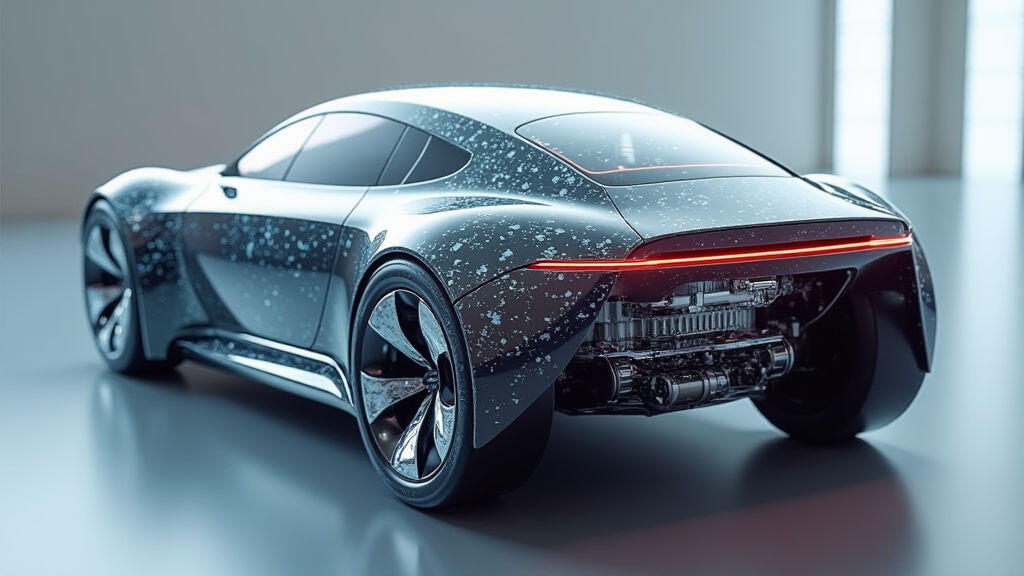Anjing Road, Xiaolan, Zhongshan, Guangdong, China
info@mes-drive.com
08.00 AM-09.00 PM

The automotive industry is undergoing a rapid transformation, driven by electrification, autonomous driving, and increasing demand for advanced driver-assistance systems (ADAS). This evolution necessitates more sophisticated and efficient components, placing a heightened importance on the selection of critical parts like right-angle gear motors. These motors play a crucial role in transmitting power and motion in a wide range of automotive applications, from electric vehicle (EV) powertrains to advanced suspension systems and infotainment mechanisms. Choosing the right right-angle gear motor is no longer a simple decision; it requires careful consideration of numerous parameters to ensure optimal performance, reliability, and cost-effectiveness. This article delves into the key factors that automotive parts enterprises should evaluate when making this critical selection.
Right-angle gear motors, characterized by their 90-degree angular change in rotational direction, are highly adaptable and space-efficient. In automotive applications, they are frequently employed to:
With the rise of EVs, the demand for high-torque, high-efficiency right-angle gear motors is soaring. EVs require robust motors to overcome inertia and power acceleration, while also demanding energy-efficient solutions to maximize range.
Selecting the appropriate right-angle gear motor involves a thorough evaluation of several critical parameters. Here's a breakdown of the most important considerations:
1. Torque Requirements:
This is arguably the most crucial parameter. Analyze the load the motor will be driving – consider factors like inertia, friction, and required acceleration/deceleration rates. Calculate the peak and continuous torque requirements. It's crucial to account for safety factors to avoid motor overload and premature failure. Manufacturers provide torque curves detailing the motor's performance at various speeds.
2. Speed & RPM:
Determine the desired output speed of the driven component. This will dictate the gear ratio required. Higher gear ratios typically result in lower output speeds and higher torque. In EV applications, achieving optimal torque and efficiency often involves carefully selecting gear ratios to match the motor characteristics to the vehicle's driving profile.
3. Power Rating:
Power is directly related to torque and speed (Power = Torque x Speed). Ensure the motor's power rating meets or exceeds the calculated demands of the application. Consider both continuous and peak power requirements.
4. Efficiency:
Efficiency is paramount, especially in EVs where energy conservation is critical. Right-angle gear motors have inherent efficiency losses due to friction within the gears and bearings. Look for motors with high efficiency ratings, ideally exceeding 90% at the operating point. Different gear designs (e.g., helical vs. spur gears) impact efficiency.
5. Size & Weight:
Space constraints are a major consideration in vehicle design. Choose a right-angle gear motor that fits comfortably within the designated space. Weight is also crucial for vehicle performance and range. Compact and lightweight designs are increasingly sought after.
6. Operating Temperature & Environment:
Automotive components are exposed to extreme temperatures and harsh environments (vibration, moisture, dust). Select a motor designed to withstand the expected operating conditions. Consider the motor's temperature range and protection against ingress of contaminants. IP (Ingress Protection) ratings provide an indication of the motor's resistance to dust and water.
7. Gear Type & Material:
Different gear types (spur, helical, planetary) offer varying advantages in terms of efficiency, noise levels, and load capacity. Helical gears are generally quieter and more efficient than spur gears but are more expensive. Gear materials (steel, aluminum, plastic) influence strength, weight, and cost.
8. Noise & Vibration:
Minimize noise and vibration levels to improve passenger comfort and reduce unwanted mechanical noise. Consider factors like gear mesh quality, bearing design, and motor mounting.
9. Reliability & Lifespan:
Reliability is a top priority in automotive applications. Select motors from reputable manufacturers with proven track records. Consider factors like bearing life, lubrication system, and overall motor durability. Request documentation on expected motor lifespan under specified operating conditions.
10. Cost & Availability:
Balance performance requirements with budget constraints. Obtain quotes from multiple suppliers and compare total cost of ownership, including purchase price, warranty, and maintenance costs. Ensure the selected motor is readily available to avoid supply chain disruptions.
The automotive industry is increasingly focused on sustainability and efficiency. This trend is driving demand for high-efficiency right-angle gear motors, particularly for electric vehicles and hybrid vehicles.
1. Integration of Smart Motor Control: Modern right-angle gear motors are increasingly integrated with sophisticated motor control systems that optimize performance, efficiency, and responsiveness. This includes features like regenerative braking and torque vectoring.
2. Advanced Materials: The use of lightweight materials like aluminum alloys and carbon fiber composites is reducing motor weight and improving vehicle fuel efficiency.
3. Miniaturization: Continued advancements in motor technology are enabling the development of smaller and more powerful right-angle gear motors, suitable for a wider range of automotive applications.
4. AI-Powered Optimization: Artificial intelligence is playing a role in optimizing gear motor design and performance. AI algorithms can be used to simulate motor behavior, identify design flaws, and predict motor lifespan, ultimately leading to more reliable and efficient components.

MES-Drive is actively investing in research and development to meet these evolving demands. They are exploring innovative materials, advanced control algorithms, and compact designs to deliver high-performance right-angle gear motors for the next generation of vehicles.
Selecting the right-angle gear motor for automotive applications is a multifaceted process requiring careful consideration of numerous parameters. From torque and efficiency to size and reliability, each factor plays a critical role in ensuring optimal performance and longevity. With the automotive industry rapidly evolving towards electrification and autonomous driving, the demand for high-performance, energy-efficient right-angle gear motors is poised for significant growth. Enterprises that prioritize thorough evaluation of these key parameters and embrace emerging trends like smart motor control and advanced materials will be well-positioned to succeed in this dynamic market. In the context of the increasing focus on sustainable mobility, the future potential of right-angle gear motors is undeniable, with advancements promising even greater efficiency, compact designs, and intelligent control, ultimately driving innovation in the automotive sector.
Leave A Reply
Your email address will not be published. Required fiels are marked